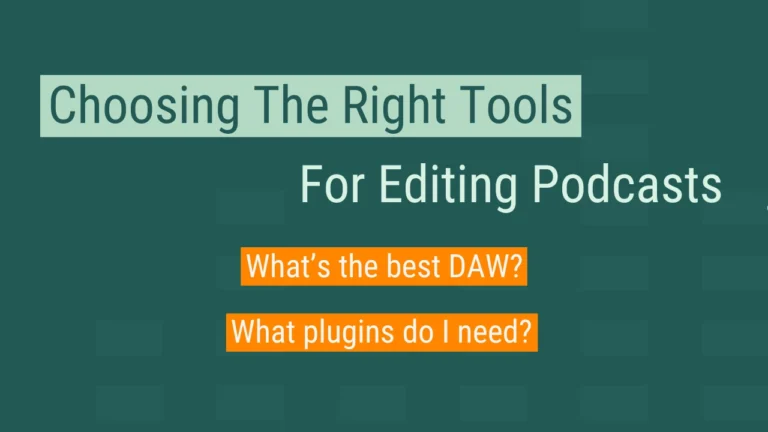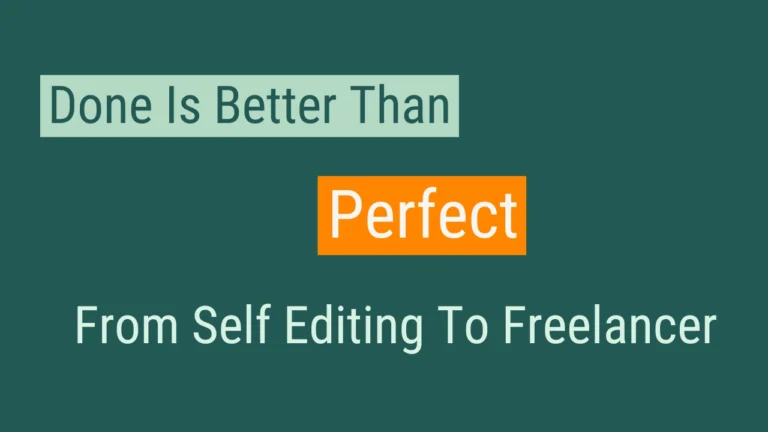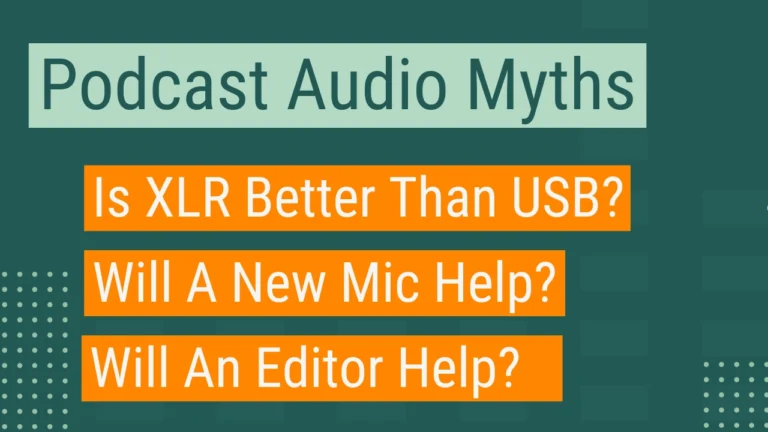In today’s booming podcast industry, many audio professionals are transitioning from traditional employment to running their own podcast editing businesses. But what does this journey actually look like? What challenges do new podcast editors face when building a sustainable business? In this article, I’ll explore the real-world experiences of Michael Jerry, who went from recording conversations in his Uber to establishing a successful podcast editing business.
Finding Your Path in Podcast Editing
Michael’s journey began while driving for Uber, where he started recording conversations with passengers (with their permission). As he ventured into editing these recordings, he quickly realized he needed to develop technical skills and industry knowledge.
“I had no clue what I was doing,” Michael admits. “So I started looking up what equipment I needed, all the hardware aspects, and then getting into the software aspects.”
This led him to formal training through Chris Curran’s Podcast Engineering School, which offered the interactive learning environment he was looking for. The structure allowed him to ask questions and gain mentorship rather than just watching instructional videos.
Key Takeaway: When starting out, invest in education that matches your learning style. Interactive courses with mentorship can provide significantly more value than passive learning options.
The Transition from Creator to Editor
What’s particularly interesting about Michael’s story is how his passion evolved during this process. While he started with an interest in creating his own podcast content, his enthusiasm shifted as he developed his technical skills.
“After I learned about editing, I found out that that’s what I enjoyed more than the actual interviews and scheduling people,” Michael explains. This self-discovery led him to pivot toward providing editing services professionally.
The Business Learning Curve
Starting a podcast editing business involves far more than just mastering the technical aspects of audio editing. For Michael, the business side proved to be equally challenging.
“From a business standpoint, it was just overwhelming,” he shares. “I didn’t know what I didn’t know.”
Michael took a methodical approach to establishing his business properly from the start:
- Setting up an LLC
- Consulting with tax attorneys
- Developing appropriate client contracts
- Learning proper client communication
The contract development process was particularly challenging. As Michael notes, there’s a delicate balance between protecting yourself legally and creating something that won’t intimidate potential clients: “How do I structure this contract in a way that it’s not bogged down with 14 pages of legalese so that when I’ve submitted it to a prospective client, they look at it and say, ‘I’m just going somewhere else’?”
Balancing Business and Creativity
One of the most significant challenges Michael faced was balancing business operations with creative work. The mental bandwidth required to handle legal, financial, and administrative tasks often competed with his ability to focus on editing.
“I’m spending more energy thinking about business things. And it was impacting my creative because I was trying to learn something new,” Michael explains.
This challenge is common among creative professionals transitioning to business ownership. It requires developing systems and boundaries that protect your creative energy while still managing the business effectively.
Setting Boundaries with Clients
Both Michael and I emphasized the importance of establishing clear boundaries with clients through proper contracts and communication.
“You’re teaching people how to interact with us,” Michael points out. He advises new editors to be clear about their policies from the beginning, especially regarding deadlines and late submissions.
I like giving clients options. Because when they are presented the choice, we’re not just kind of imposing something on them. For example, instead of imposing a “late fee,” I frame it as a choice between paying for rush service or delaying release.
The Value of Taking Time Off
One particularly interesting aspect of Michael’s business model is his commitment to taking the entire month of July off each year to spend time with his son. This annual break is built into his contracts and business structure.
“From January through June, I’m grinding. From August through December, I’m grinding. But July, it’s just family time,” Michael explains.
This deliberate approach to work-life balance highlights the importance of:
- Building personal priorities into your business model
- Communicating these boundaries clearly with clients
- Ensuring your pricing structure supports your desired lifestyle
Client Relationships and Expectations
Both Michael and I shared stories about challenging client relationships that provided valuable learning experiences. These situations often stemmed from misaligned expectations or communication breakdowns.
Michael described a client who didn’t fully understand his July break policy despite it being spelled out in the contract. I shared a story about scope creep with a client who consistently delivered much longer episodes than initially agreed upon.
These stories highlight the importance of:
- Verbal reinforcement of written policies
- Regular check-ins about expectations
- Being willing to part ways when the relationship isn’t working
The Reality of Client Turnover
Perhaps one of the most valuable insights from our conversation was the acknowledgment that client turnover is inevitable in this business.
“Every client you have, at some point, you’re probably going to lose them. It’s just a part of running a business,” I noted.
This reality doesn’t mean you’re doing something wrong; it’s simply the nature of business relationships. Clients’ needs change, economic conditions shift, and sometimes relationships just run their course.
Pricing for Sustainability
A significant portion of our conversation focused on setting appropriate rates as a podcast editor. Both Michael and I emphasized that pricing shouldn’t just cover your immediate costs but should account for:
- Business expenses (software, hardware, subscriptions)
- Personal expenses (health insurance, retirement savings)
- Planned time off
- Continuing education and skill development
“Those things are all factored into my rates,” Michael explains, referring to his month off and ongoing expenses.
I added an important perspective on price comparisons: “It’s not necessarily that my work is two times better than someone that charges half of what I charge, but I have different expenses.”
Building a Support Network
As your business grows, both Michael and I recommend building a network of complementary service providers. This allows you to focus on your strengths while still meeting client needs.
Michael explains: “I abhor show notes. Anything that has to do with written word, I am not going to do… So I have no problem subletting that out to someone else if I have a client that wants those things.”
This approach creates a win-win situation where you can provide comprehensive services to clients while focusing on the work you do best.
Final Thoughts
Building a sustainable podcast editing business requires much more than technical skill. It demands business acumen, strong communication, boundary-setting, and self-awareness about your strengths and limitations.
As Michael’s journey demonstrates, the path from hobbyist to business owner involves continuous learning and adjustment. By approaching this transition thoughtfully—with clear contracts, appropriate pricing, and strong boundaries—podcast editors can build businesses that not only survive but thrive while supporting their desired lifestyle.
Whether you’re just starting out or looking to refine your existing podcast editing business, these insights from experienced professionals offer valuable guidance for navigating the challenges and opportunities in this growing industry.






